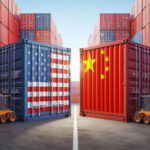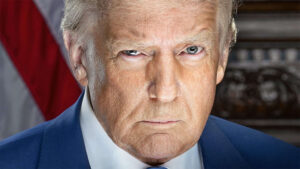Unlike Trump’s proposed tariffs for China, the tariffs heading for Canada and Mexico can be viewed as leverage (or bargaining chips) to address issues amongst our North American trade partners.
Trump’s goal isn’t to disrupt North American manufacturing, he’s just looking to gain the upper hand for negotiations on things like migration and drug control. But that doesn’t mean these tariffs won’t sting. US citizens should expect to see a nice bump in costs to goods crossing these borders. Trump’s North American tariff strategy is a bit reminiscent of Cold War policies where trade access was tied to concessions.
How are our neighbors going to react? I would expect Mexico to cooperate, especially with their new (and hopefully more pragmatic) President Claudia Sheinbaum at the helm. Relations with Canada could sour as they are resistant to any action that could be perceived as ‘bending the knee’ to the US.
Tomorrow we’ll dive a bit deeper on one of the things Trump is looking to stop…fentanyl.
Here at Zeihan on Geopolitics, our chosen charity partner is MedShare. They provide emergency medical services to communities in need, with a very heavy emphasis on locations facing acute crises. Medshare operates right in the thick of it, so we can be sure that every cent of our donation is not simply going directly to where help is needed most, but our donations serve as a force multiplier for a system already in existence.
For those who would like to donate directly to MedShare or to learn more about their efforts, you can click this link.
Transcript
Alright. We’re trying the drone today. Today is part two of the Trump’s Tariffs series. Yesterday, we covered China and discussed how what Trump is achieving there is an industrial reorganization. Tariffs may actually, in the right policy combination, work for that.
That’s very different from what’s going on with Mexico and Canada. Mexico and Canada are the number two and number one trading partners collectively.
If the tariffs that Trump says he’s going to put on actually happen and there is no retaliation, we’re looking at something along the lines of roughly a $1,500 hit to every man, woman, and child in the United States. So, potentially big. That’ll hit some industries more than others. Automotive is definitely the one that will get hit the most because there are a lot of products, especially in U.S.-Mexico trade, where intermediate products go back and forth, and back and forth, and back and forth across the border.
The administrative cost of imposing a single 25% would be huge. It would be easier just to do it every time something crosses. So, all of a sudden, you’re adding $5,000 to $10,000 to the cost of a vehicle that is made in North America. It’s an inflationary issue, an employment issue, and an industry issue. There is no version of the future of the United States that is post-China that does not involve Mexico and Canada very, very strongly.
Keep in mind that Trump put his name on the most recent trade deal with both countries. That’s NAFTA Two. So, potentially very, very, very big.
However, what Trump is attempting to achieve with Mexico and Canada is not the same as what he’s trying to achieve in China. In China, he’s actually trying to move industry. He doesn’t seem to have a problem with the manufacturing supply chains we have here in North America.
His concern is he wants to use the lever or the hammer of trade and tariffs to get progress, in his view, on immigration, migration, and especially on fentanyl. So basically, it’s an “if this, then that.”
Now, that’s not a crazy idea. In fact, there are a couple of reasons to expect it to work. First off, that’s the whole concept of globalization and the Cold War: that the United States used its Navy to patrol the global oceans to force open international trade, including our own market.
We would do this for you if, in exchange, you would allow the United States to write your security policies. That was the policy right up until 1992.
Now, we got away from that in the post-Cold War era, where free trade became a goal in and of itself. Trump wants to dial the clock back 35 years and start renegotiating what security policies mean to include migration and fentanyl.
The idea that you can do that makes a lot of sense because the United States is the only large, rich, consumption-led economy in the world. That means that the U.S. president, whoever that happens to be, has a huge amount of negotiating room to get what he wants, whatever the issue happens to be. So, you want access to this market? That’s fine.
You have to do XYZ, A, B, and C, and you have to do that maybe first.
The question is time frame.
In the case of Mexico, it’s probably going to work because it’s worked before. In Trump’s first term, he tried something very similar on migration issues and forced a deal with the then-president, Lopez Obrador. We now have a new president, Claudia Sheinbaum, who is much better at math than her predecessor.
So, it’s just a question of how these two ultimately do or do not get along.
In the case of Canada, it’s probably going to be a little bit more sticky. The ruling government of Justin Trudeau is a minority government. It is in trouble, it’s not popular, and it faces an election next year. Capitulating to Donald Trump is generally not a great way to win accolades with leftist supporters.
So, we might actually see relations between the United States and Mexico pull forward in its own way, while relations between the United States and Canada suffer.
But a much bigger issue is whether or not what Trump is wanting to do with Mexico and Canada can actually work.
There are ways that Mexico, in particular, can cooperate with the United States on migration. That has happened in the past. I’m sure it will happen again in the future. But fentanyl is different.
Trump’s understanding of fentanyl is that the precursor materials come from China, whereas the turning to finish the drugs happens in Mexico, and then they cross the border into the U.S. That’s accurate, but it’s an incomplete understanding because fentanyl is different from cocaine.
Cocaine has very specific economics and geography of production and transport. Fentanyl does not.
To understand the pros and cons of what Trump is trying to achieve with trade policy, we need to look at the supply chain for fentanyl. Then, we might see how things could work a little bit differently.
That’s going to take a whole other video. We will tackle that tomorrow.








